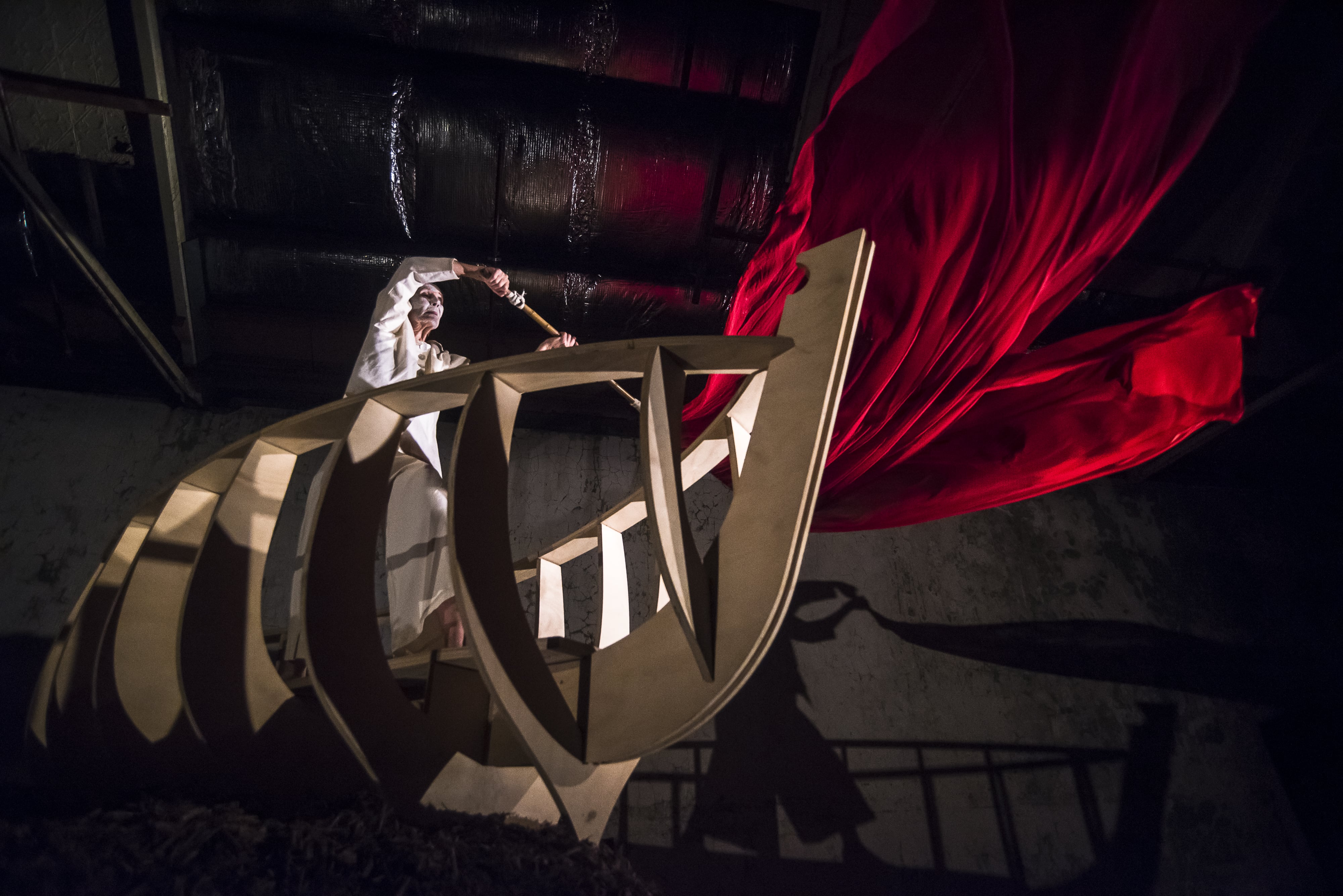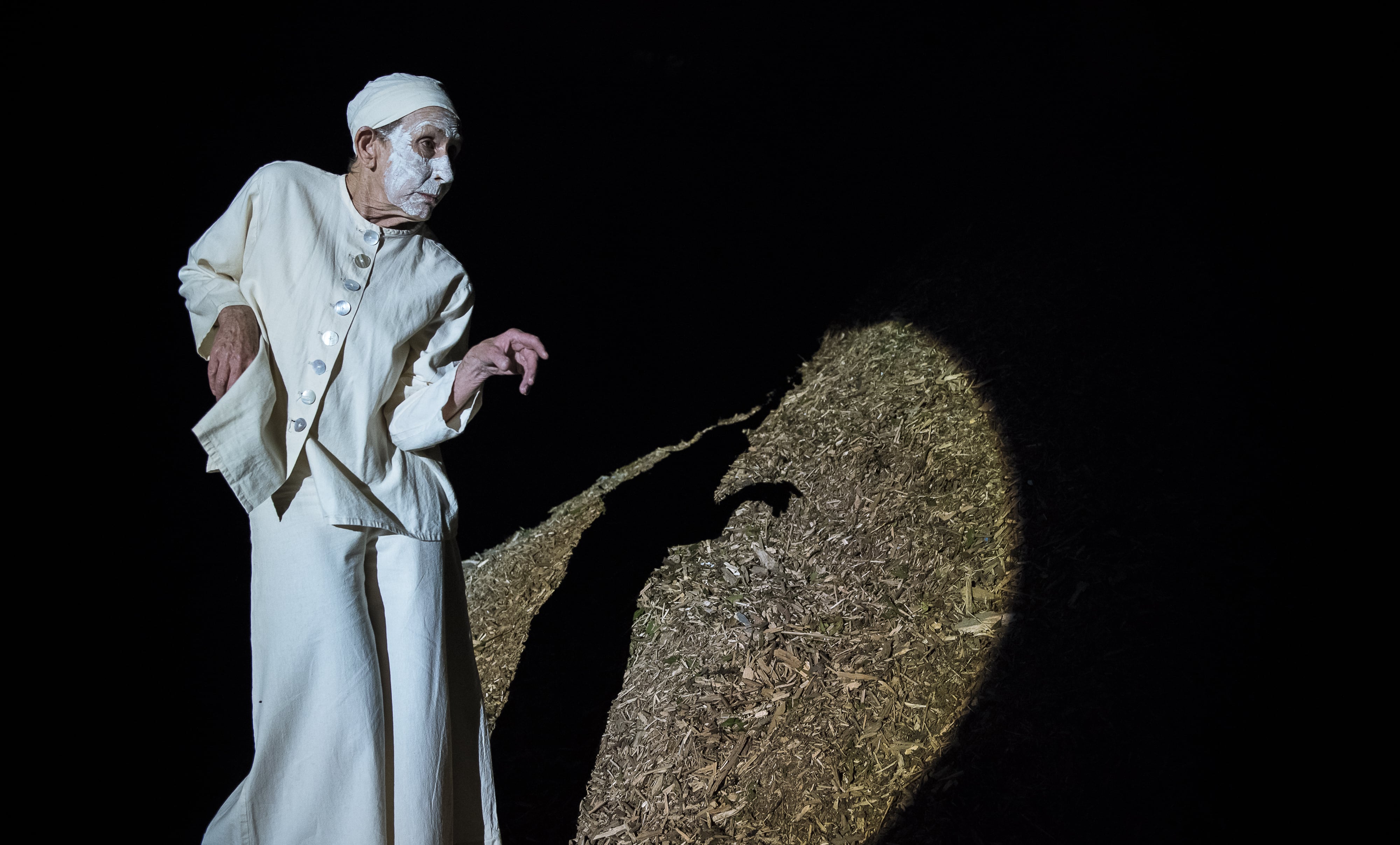

The heavy smell of earth greets us as we enter Abbotsford Convent’s recently opened Magdalen Laundries for Jill Orr’s performance of Dark Night for Dance Massive 2019. Carrying a heavy history of their own — once used as an asylum to ‘rehabilitate’ young girls and women — the walls of the laundries are caked with layers of peeling paint. A mound of earth rises high in the space, on top of which sits the wooden skeleton of a small boat. There we find Orr, sitting frozen, clad in white, her face chalky with paint.
Holding the long stick that is her oar, Orr breaks into a fluid movement, rowing her impossible boat. Her repeated gesture is ritualistic; like a phrase chanted over and over, her carefully controlled pace seems to summon something up. Appearing from the outset as the beginning of a voyage, there is something grand and romantic about this image. As Orr exchanges her rowing stick for a giant red flag, waving the swirling fabric around her, a historic battle is recalled; Orr cites Gericault’s The Raft of the Medusa and Delacroix’s Liberty Leading the People as references. Gericault’s famous oil painting is anything but triumphant. The few survivors of the wreck are depicted waving a red cloth in a last-ditch attempt to signal for help amid a sinking raft. The story goes that the survivors had resorted to cannibalism as they starved on the ocean.
In Dark Night the red flag acts as a signal; an arrival, or a gesture of defiance.
From the grace and grandeur of the battle image, Orr transforms, clothing herself in a heavy, earthen garment, shaman-like and ragged. She crouches, vulnerable, hidden beneath her garment. Descending from the mound to the level of the audience Orr shuffles around. With all distinguishing features covered she seems more creature than human. Making herself entirely other, widening the gap that already exists between the performer and her audience, creates a discomfort, especially in contrast with the earlier, easily readable symbol of the boat. The sounds of the Australian bush, which have hummed throughout the performance, are now accompanied by a deep, more sinister sound; the rumbling sound of some kind of heavy machinery, perhaps.
In a simple reading, the narrative of Dark Night shows a voyage and a landing on a foreign shore. A slightly distracting text given to the audience beforehand references the journey of people seeking asylum in Australia, however the performance seems to resist a direct translation of this narrative. The work functions more as a series of discrete events, a tableaux of contradicting entities. In the final sequence Orr, no longer covered in the heavy cloth, moves as one fearful and paranoid. She is vulnerable, harshly lit and without her vessel or disguise. It is a more immediate mode, without the structure of the ritual movements or props she had earlier. This movement, twitching and hesitating, is confrontational in its rawness.
Perhaps this work speaks most powerfully to the refugee crisis by destabilising romantic and exotic narratives, bringing to the surface that mixture of fear and pity that the Greeks considered key to catharsis. A fear that comes most from identifying with something in the state of the other but not daring to recognise it in ourselves.
Miranda is a writer and artist with an interest in philosophy and mysticism. Her professional experience is in the community and not-for-profit sector. She currently works for a large-scale social enterprise in Narrm/Melbourne.
